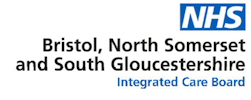

The service is provided by UHBW at the Bristol Royal Infirmary and is for patients who meet the Head and Neck Cancer (including Thyroid) USC (2WW) criteria.
Contact details ADULT USC:
UHBW - Tel on 0117 342 7641 / 2 / 3 / 4 or email to FastTrackOffice@uhbw.nhs.uk
At time of referral please issue the BNSSG Understanding Your Urgent Fast Track Referral patient information leaflet.
Referrals should be made using the Suspected Head & Neck Cancer Referral Form (word doc)
Please attach images if you think these would assist secondary care triage - Tips for capturing imaging of oral lesions
Dentists - If patient meets the criteria for an USC referral please refer them directly by emailing the referral form to FastTrackOffice@uhbw.nhs.uk
MDT referrals - If advised to refer into MDT, then please submit a USC referral to the relevant secondary care team who will ensure that all the required information is available to enable an effective MDT discussion.
Risk Calculator
The following risk calculator can be used in primary care as part of the clinical assessment of patients with Head and Neck but not Oral MaxFax symptoms. The score from this can then be used to guide whether referral is required and if so with what level of urgency.
Secondary Care Triage
All USC referrals will be triaged. Patients may be booked for a telephone assessment, for a diagnostic test or for an outpatients appointment.
Suspected Head and Neck Cancer - General:
If there is widespread lymphadenopathy above and below diaphragm / B symptoms, please use the Haematology - USC (2WW) pathway.
Patients with neck lumps meeting USC criteria should be referred via the USC pathway. Do not arrange a neck USS outside of this pathway. For neck lumps not meeting USC criteria, please see advice on the Ultrasound Guidance page.
Suspected Head and Neck Cancer – Ear, Nose and Throat Origin:
*Unilateral nasal obstruction with bloody discharge is usually a result of sinus disease, this is no longer an indication for an USC referral unless there are additional reasons for concern. Please refer this symptom for urgent (non cancer) assessment.
* Patients less than 40 with a hoarse voice or constant sore throat are very unlikely to have an underlying cancer, please refer these patients on a non-cancer pathway unless there are additional reasons for concern.
Other nasopharyngeal symptoms may require urgent referral; see nasal treatment section of Remedy for further details.
Suspected Thyroid Cancer:
Suspected Head and Neck Cancer - Oral Maxillo-Facial Origin:
If the patient has prompt access to dental assessment (within 2weeks) then NICE suggests that the following patients could be referred to a dentist outside of the USC pathway:
If the patient doesn’t have access to a dentist then they can be referred on the USC pathway. If possible, please attach images of the area of concern to this referral.
Refer on USC pathway if
Please see NICE Cancer Guidelines 2015 for Head and Neck Cancers
Lymphadenopathy
Please also see the Lymphadenopathy (adults) page for further advice on assessment and management of lymphadenopathy if USC/2WW criteria are not met.
Suspected Ophthalmological Malignancy
There is currently no formal Urgent Suspected Cancer (2WW) referral pathway for ophthalmology (Update October 2024 - this has been under review and we hope a dedicated pathway will be developed).
Suspected skin malignancy near the eye
Patients with suspected malignancy of the eyelid or near to the eye should be referred using the Skin USC pathway
Suspected intraocular or orbit malignancy
Patients with suspected ocular or orbit malignancy should be referred via eRS and marked urgent or discussed with the on call registrar if there are more immediate concerns.
Alternatively the Head and Neck USC pathway can be used. There is no tick box for ophthalmological malignancy on this form but concerns can be free texted and referrals should be accepted via this route.
Efforts are made to ensure the accuracy and agreement of these guidelines, including any content uploaded, referred to or linked to from the system. However, BNSSG ICB cannot guarantee this. This guidance does not override the individual responsibility of healthcare professionals to make decisions appropriate to the circumstances of the individual patient, in consultation with the patient and/or guardian or carer, in accordance with the mental capacity act, and informed by the summary of product characteristics of any drugs they are considering. Practitioners are required to perform their duties in accordance with the law and their regulators and nothing in this guidance should be interpreted in a way that would be inconsistent with compliance with those duties.
Information provided through Remedy is continually updated so please be aware any printed copies may quickly become out of date.